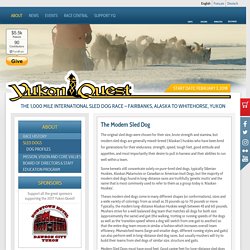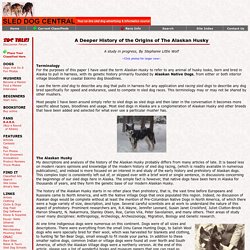

Siberian Husky Dog Breed Information. Finding a Siberian Husky Whether you want to go with a breeder or get your dog from a shelter or rescue, here are some things to keep in mind.

Choosing a Siberian Husky Breeder Finding a good breeder is a great way to find the right puppy. A good breeder will match you with the right puppy and will, without question, have done all the health certifications necessary to screen out health problems as much as possible. She is more interested in placing pups in the right homes than making big bucks. Good breeders will welcome your questions about temperament, health clearances, and what the dogs are like to live with, and come right back at you with questions of their own about what you’re looking for in a dog and what kind of life you can provide for him.
The Siberian Husky Club of America is a good place to start your search for a responsible breeder. Avoid breeders who seem interested only in how quickly they can unload a puppy on you and whether your credit card will go through. 1. 2. The Modern Sled Dog. The original sled dogs were chosen for their size, brute strength and stamina, but modern sled dogs are generally mixed-breed (‘Alaskan’) huskies who have been bred for generations for their endurance, strength, speed, tough feet, good attitude and appetites, and most importantly their desire to pull in harness and their abilities to run well within a team.

Some kennels still concentrate solely on pure-bred sled dogs, typically Siberian Huskies, Alaskan Malamutes or Canadian or American Inuit Dogs, but the majority of modern sled dogs found in long-distance races are truthfully 'genetic mutts' and the name that is most commonly used to refer to them as a group today is 'Alaskan Huskies'. Theses modern sled dogs come in many different shapes (or conformations), sizes and a wide variety of colorings; from as small as 35 pounds up to 70 pounds or more.
Typically, the modern long-distance Alaskan Huskies weigh between 45 and 60 pounds. Sled Dog Central : A Deeper History of the Origins of the Alaskan Husky by Stephanie Little Wolf. A Deeper History of the Origins of The Alaskan Husky A study in progress, By Stephanie Little Wolf ~Click photos for larger view~ Terminology For the purposes of this paper I have used the term Alaskan Husky to refer to any animal of husky looks, born and bred in Alaska to pull in harness, with its genetic history primarily founded by Alaskan Native Dogs, from either or both interior village bloodlines or coastal Eskimo dog bloodlines.

I use the term sled dog to describe any dog that pulls in harness for any application and racing sled dogs to describe any dog bred specifically for speed and endurance, used to compete in sled dog races. This terminology may or may not be shared by other mushers. Most people I have been around simply refer to sled dogs as sled dogs and then later in the conversation it becomes more specific about types, bloodlines and usage. The Alaskan Husky My descriptions and analysis of the history of the Alaskan Husky probably differs from many articles of late. Notes: Sleddog Traits that Matter. SLEDDOG BREEDING, it seems, is widely supposed to be so simple as hardly to be worth discussing.

There seem to be two very popular schools of thought. Newcomers to sleddog breeding, especially those freshly graduated from the ranks of show dog enthusiasts, often tend to assume that the heart of the matter lies in racing physique. After all, they have seen enough examples of dogs that obviously can't run because they are grossly too heavy-boned, too short-legged, too under-angulated, carry too much of their own body weight, have too heavy or long a coat, etc. Hence they tend to assume that the secret of breeding sleddogs must be to produce a fine-boned, long-legged, super-angulated, light-weight, scantily-coated dog! (Does this sound familiar to anyone?) 1. A dog that goes fast but fails to pull might be a running dog, but it isn't a sleddog. 2. Speed is not an absolute; it is a relative matter entirely. 3. 4.
Attitude is primordial where sleddogs are concerned. 5. 6. 7. 8. 9. 10. 11.